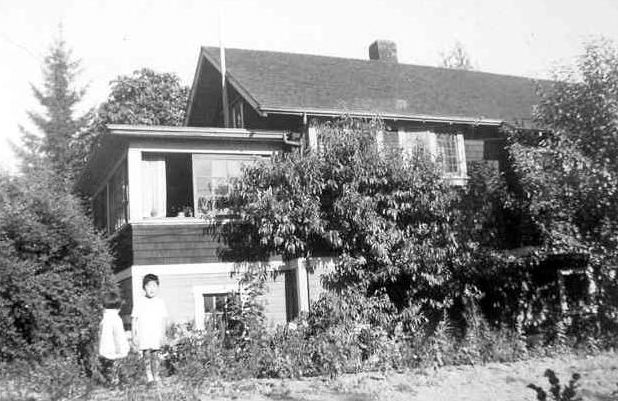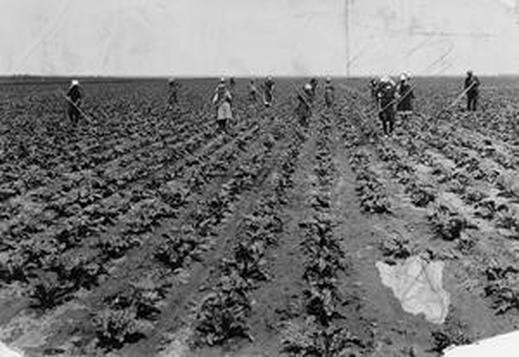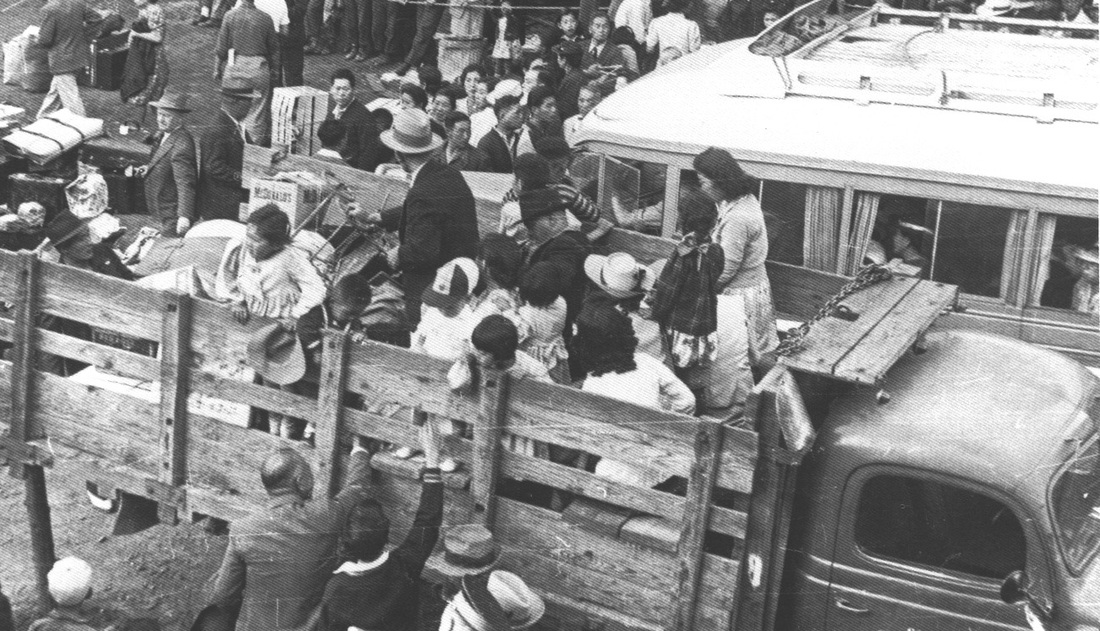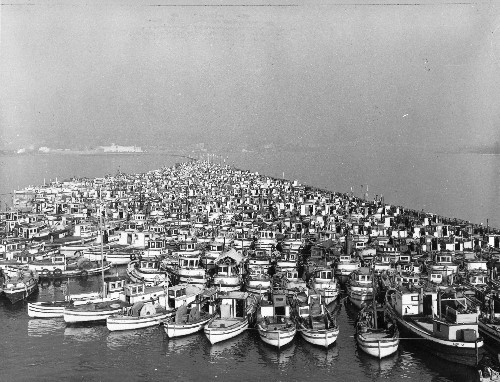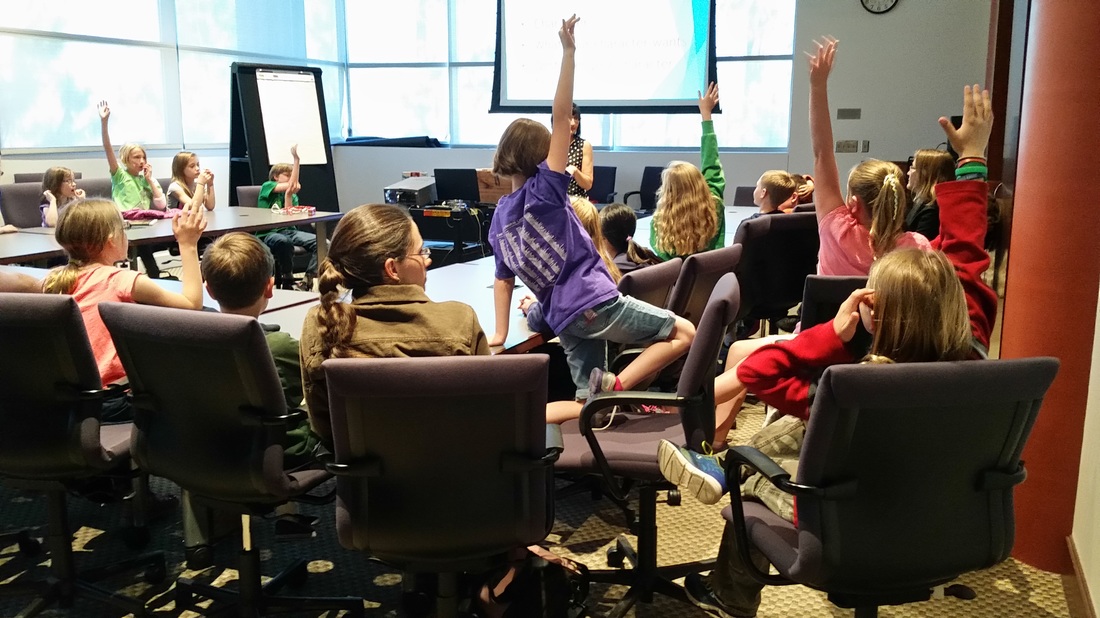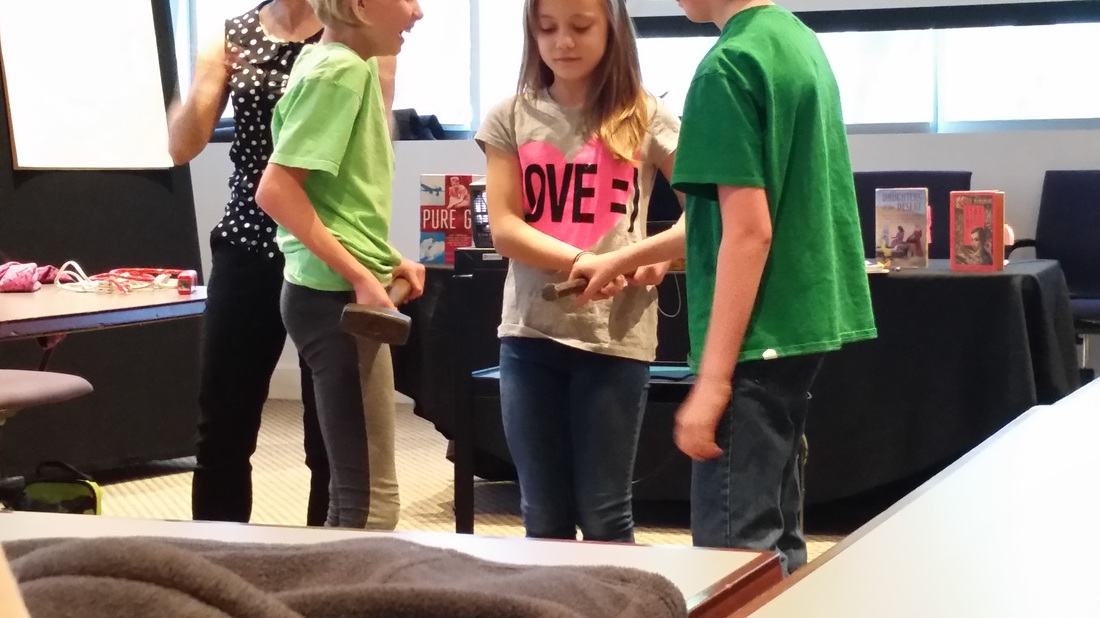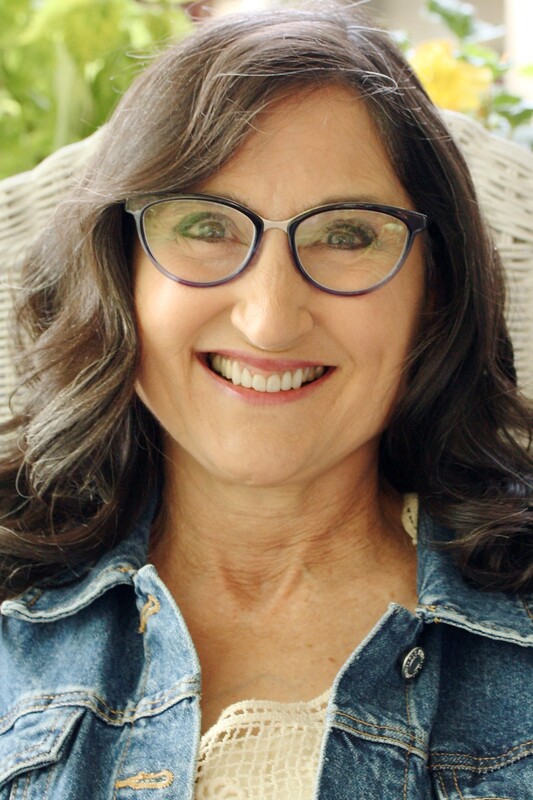|
Last week I told you about Joy Kogawa, a Canadian Japanese woman whose family was torn apart and interned during WWII. The family's home in Vancouver, British Columbia was confiscated and sold without their permission, as were their possessions.
They had to weed fields like these shown in the photo three times a year, and then harvest the beets. For five years, through blistering summers and freezing winters, the children, an aunt and an uncle lived in a one-room hut on a remote farm on the Alberta prairie.
When Japan bombed Pearl Harbor, Jo's mother and maternal grandmother were visiting relatives in Japan. Jo never heard from her mother again. Not until she was an adult did she learn her mother died after suffering terrible burns when Nagasaki was hit by the atomic bomb. Jo's father had died an early death in the internment hospital during the war.
How does one build a life from the shambles of a family staggering under the anguish of such bitter injustice?
The Canadian government and many citizens refused to acknowledge the wrong done to Japanese Canadians, but Joy realized the silence had gone on long enough. As Joy reflected on her experiences she began to write her novel Obasan, named for the aunt who cared for her during the internment and her teenage years. She mentioned two ideas in the book, which I believe helped her move beyond the evils that had happened to her. One she describes through the metaphor of remembering her grandfather’s woodworking. ““I can feel the outline of the plane with a wooden handle which he worked by pulling it towards him. There is a fundamental difference in Japanese workmanship--to pull with control rather than push with force.” Another insight comes from the Japanese ideograph for “love” which contains the root words heart, hand and action. The power of story also gives Joy courage. Writing her novel of one woman’s brokenness and journey toward healing brings not only helps mend her own heart, but harnesses the power of narrative to shine a light on history and move people to try and right the wrongs.
At last report, Joy Kogawa was working on a memoir entitled Gently, to Nagasaki. She says this project is the hardest thing she has ever done because she has had to "go to her personal hell" in search of mercy.
Mercy is necessary, Joy says, because so many people in the world live with a constricted fearful heart. They live with a scarcity mindset. Mercy moves us to an abundance mindset. For a longer interview with Joy Kogawa, click here... I've been struck by so many pieces of this story. I love the idea that action is integral to love. I'm pondering how Joy uses the word "mercy" where others might use "forgiveness." I'm wondering if I can have a mindset of abundance when I start to feel I don't have enough time in my day. What do you think? I'd love to hear your thoughts on this story. Leave you comments below. 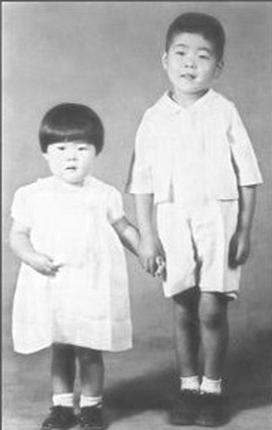 Following Pearl Harbor, racist fear and resentment exploded against Japanese Canadians in British Columbia. "It is the government's plan to get these people out of B.C. as fast as possible," said Cabinet Minister Ian MacKenzie. "It is my personal intention, as long as I remain in public life, to see they never come back here. Let our slogan be...No Japs from the Rockies to the seas." Six-year-old Joy Kogawa and her brother were separated from their father and grandparents and herded onto a train with an aunt & uncle. The train carried them to Slocan City, a long played-out silver mining town in the foothills of the B.C. Rockies. Joy choose one doll to take with her. The outcasts were allowed only what they could carry to build a life in a two room shack with no plumbing or electricity. The family's home in Vancouver, BC and all it’s furnishings were confiscated and later sold for a tenth of their value. Royal Canadian Mounted Police yanked men away from their livelihood, fishing boats and gear confiscated, their life on the temperate coast exchanged for the harsh conditions of inland roadwork camps. 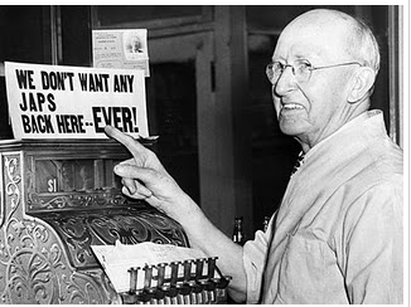 Canadians have a great reputation. In fact, for three of the last four years running the Reputation Institute reports Canada has been the most beloved country in the world. Maybe that's why it was such a shock when I discovered Canada, like the United States, treated its Japanese citizens so shamefully during World War II. Reading a novel based on these events, I nearly had to put it down, it was so awful. But as is often true, I found the story of a woman who survived horrible hardship and injustice, and somehow spun straw into gold. 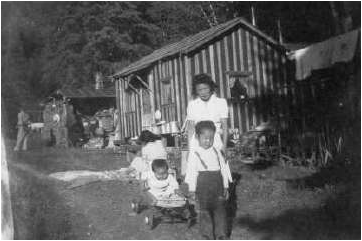 Thanks to George Fukuhara for photo. Thanks to George Fukuhara for photo. Many women, children and elderly were rounded up and housed for months in an over-crowded livestock exhibition building, before being shipped off to shanty towns and internment camps. At right, Fumiko Fukuhara with two of her children in front of their tar-paper shack near Tappin B.C. Nearly starving the winter of 1942-43, they found a farmer, Henry Calhoun farm willing to give them work on his vegetable farm. Twelve-hundred fishing boats were taken from Japanese Canadians. After WWII, Joy and her family hoped to return to their home and life in Vancouver where her father had been a doctor. Instead they were hauled even further from home, over the Rocky Mountains to a sugar beet farm near Lethbridge, Alberta. They lived in a one-room hut with their aunt & uncle, toiled in the beet fields during the blazing summers and traded places near the stove during the freezing winters. Joy Kogawa wrote a novelized version of her experiences during this time. In Obasan, she speaks of those years on the sugar beet farm. 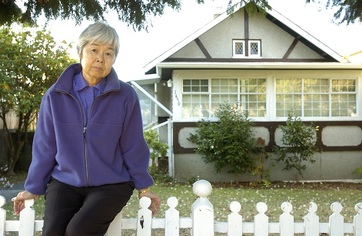 Photo thanks to Dan Toulgoet, Vancouver Courier Photo thanks to Dan Toulgoet, Vancouver Courier But the nightmare grew even worse. Years later, Joy discovered her mother, who had been visiting Japan when the war broke out, was in Nagasaki when the U.S. bombed the city. Next week, I'll tell you about Joy's journey through "personal hell" to find mercy. Her novel Obasan is now required reading in many schools across Canada, and has been called one of the country's all-time best 100 books. “The fact is, I never got used to it, and I cannot. I cannot bear the memories. There are some nightmares from which there is no waking.” Click here to read part two...Look at the enthusiasm of these students! They earned a field trip and pizza party for meeting their reading goals over the school year. One young girl more than doubled hers. I knew we were kindred spirits as soon as I heard two kids confess they read when they were supposed to be doing their chores. I had the privilege and delight of talking to them about writing, and sharing the topics of my books. Their many questions revealed their curiosity and eagerness to learn. I was impressed by their level of knowledge, which, of course, I attribute to the fact they are all terrific readers. But they attend a unique school, as well. 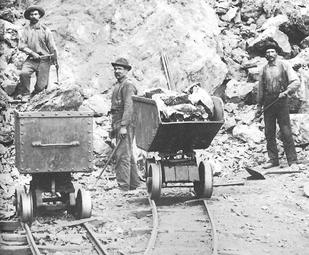 Examining historical photos of miners in the Coeur d'Alene Silver Mining District, the students drew inferences about conditions of the time and place. At left: The original Old Glory Hole at the Bunker & Sullivan Mine, Kellogg, ID. 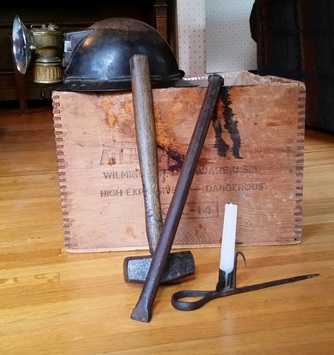 These museum quality artifacts I collected while researching Fire in the Hole! help students gain hands-on experience of the time period. Below students take a turn with hammer and steel to get a feel for how hard miners' worked in the old days before power drills. These students attend the Continuous Curriculum School in the East Valley School District near Spokane, WA. They explained to me how they only get six weeks off for the summer, but get more breaks during the rest of the school year.
My favorite part of visiting with students this week was hearing about the characters they developed during a short writing assignment. One character was a 6-year-old girl named Hannah, with neon-hair and freckles. Her goal was to pan for fools' gold, and to meet it, she had to climb a mountain and brave a river full of alligators. Now that's a story I want to read! It was a terrific break from writing to spend a couple hours with these bright, curious and confident young people. It was inspiring how they shared their ideas with such eagerness and enthusiasm. Several weeks ago, I met with a book club of mostly retired women, and is was similarly invigorating. Their life experiences and wisdom felt like a book I'd love to page through. Let's hear from you! What do you gain from spending time with people outside your own age group. |
I'm fascinated to discover little-known history, stories of people and events that provide a new perspective on why and how things happened, new voices that haven't been heard, insight into how the past brought us here today, and how it might guide us to a better future.
I also post here about my books and feature other authors and their books on compelling and important historical topics. Occasionally, I share what makes me happy, pictures of my garden, recipes I've made, events I've attended, people I've met. I'm always happy to hear from readers in the blog comments, by email or social media. Archives
September 2023
Categories
All
|
